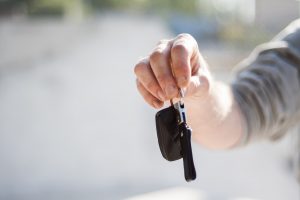By: Parker Keatin

What should you look for when buying a used car? You may believe that if the general appearance of the car looks okay and the vehicle isn’t falling to pieces then you are off to a good start.
That couldn’t be farther from the truth. Though it can be difficult to perform a thorough used car inspection independently, it is important to do so so that you do not wind up with a vehicle that comes with a whole list of problems!
After all, the last thing you want to do is chase down legal help to fix the problem. For those shipping their vehicles down, let me tell you – it can be a real nightmare trying to get a lemonlaw company to protect you abroad.
The good news is that this article gives pretty epic tips to help you know what to keep your eyes out for when performing a used car inspection. So, let’s move on to the used-car inspection checklist.
Step One: Inspect the Outer Body
As mentioned above, checking the outer body of a used car is not all that you need to check but it is definitely a good place to start. No rust, dents or visible damage on the vehicle? Excellent! You need to be very thorough with your external checks though. A small sign of exterior damage may seem like nothing but it could very well point to a much larger issue.
When checking the exterior of the car, you need to make sure that the colors are the same on each panel. Ensure that the rubber seals along all of the windows and doors are not peeling away or rotting. Though you may not want to look like a crazy person rolling around on the floor of the used car garage with a flashlight, you need to check the wheel wells with a light to ensure that there are no signs of rust or water damage here as well.
Step Two: Check the Glass Situation

If the car has no visible signs of damage or issues from the exterior then you can move swiftly on to the next step: checking the windows and the glass. Obviously huge cracks and damaged windows are screaming red flags, but you also need to be mindful of smaller chips. A small chip in the windscreen may look like nothing to be alarmed about but it can quickly expand and become worse. Inspect the vehicle for problems with the windows now, so that you do not have to be forking out hundreds of dollars to replace the entire windscreen in just a few months time.
Small scratches are not exactly the end of the world but they are also worth looking out for. Signs of significant wear and tear like this can be used as a negotiating tool for bringing down the price offered by your car dealer.
Step Three: Test the Lighting
Next step, venture inside the car and make sure that all of the lights are working. This means testing each and every vehicle light to ensure that it is operating correctly. Obviously, you cannot be in two places at once in order to check the external lights so if possible, have a friend or family member visit the dealership with you so that they can help you check. Don’t depend on the assurance of the person who is trying to sell you the car!
In summary, when you test the lighting on a used car you need to test both your high and lo-beams, your fog lights, your brake lights, your turn signals and your reverse lights. Not only is it a felony to drive without some of these lights, it can be incredibly expensive to replace and repair them.
Step Four: Scope Out the Inside of the Car
While you’re in the vehicle tinkering around with the various lights, it is important to keep your eyes peeled for any warning signs about the interior condition of the car. Obviously you want a car whereby the seats, pedals and carpets are not looking haggard and disheveled. There are also more technical matters to look at while inside the car also.
Technical feature-wise, first and foremost you need to check that the air conditioner and radiator works as it should do. The mileage may be a serious factor in your decision as to whether a used car is worth buying or not so be sure to glance over at the clock. As you may well be aware, this is one of the best indicators of a car’s age. Lastly, fiddle around with all of the other components in the car and make sure that they function correctly. This relates to the car radio, the interior lights, the lighter, etc.
Step Five: Glance Under the Hood

Don’t be one of those car buyers that simply lifts up the hood of their new car, exclaims “yep!” and closes it again. It is important to check under the hood but equally, it is important to know what exactly you are looking for under there! Look at the engine to ensure that there are no signs of a leakage. If you see brown stains anywhere around the hood’s interior then that is a bad sign of a gasket leak. Check the timing belt, the transmission dipstick and the transmission fluid. The components underneath the car’s hood are both safety critical and some of the most expensive to repair.
Before you venture out to the used car lot, read up on the different components of cars. That way, even if you just have a very basic level of knowledge, you will know precisely what you need to look for. Failing that, take a car loving friend to accompany you and help out!

Hey just wanted to give you a brief heads up and let you know a few of
the pictures aren’t loading properly. I’m not sure why but
I think its a linking issue. I’ve tried it in two different web browsers
and both show the same results.
Truly when someone doesn’t understand afterward its up to
other visitors that they will help, so here it takes place.